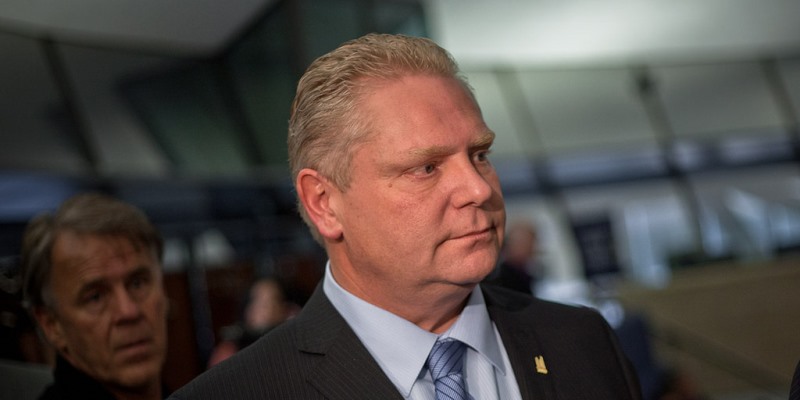Learning from the past—rapid deficit-reduction should be a Ford government priority

In the spring, former Ontario finance minister Charles Sousa and his incumbent Liberal government surprised many by announcing that Queen’s Park would run an operating deficit of $6.7 billion this year. This was a stunning reversal from previous promises that once the budget was balanced (at least according to government accounting standards) for the first time in a decade in 2017/18, the government would avoid deficit-spending for the foreseeable future.
Equally surprising was the Liberal government’s long and uncertain “path to balance,” which forecasted continued deficit-spending for another five years after the current year, before finally achieving a balanced budget in 2024/25. If this plan were implemented, it would mean 15 operating deficits in 16 years for Ontario from 2008-09 to 2024/25.
As the new Ford government works to set its priorities, developing a dramatically faster path to balance should be near the top of the list. Another half-decade of operating deficits and rapid debt accumulation would present real risks for Ontario’s economy and add to the burden of debt interest for taxpayers now and in the future.
Clearly, Ontario’s recent history underscores the risks associated with a “slow and steady” approach to deficit reduction.
In 2008/09, Ontario fell into a deep deficit due to a combination of spending growth in preceding years and a big drop in revenue due to the financial crisis and 2008/09 recession. In 2009/10, economic weakness and stimulus spending caused that deficit to explode to $19.2 billion.
Back then, the Liberal government of the day decided that, despite the big deficit and rapidly accumulating debt, it would not meaningful reduce nominal spending but would instead slow down the pace of spending growth, allowing revenue growth to slowly close the gap and slowly reduce the deficit over time.
This approach did gradually shrink the deficit over time—but the province was still in the red every year in terms of its operating budget. This, plus new debt for infrastructure projects, meant that even though the annual shortfall was reduced year to year, the province’s actual debt burden grew quickly. By the time the government finally claimed a balanced budget in 2017/18, Ontario’s net debt (a measure that adjusts from financial assets) had reached $308 billion, up from $156 billion pre-recession.
When it comes to avoiding rapid debt accumulation in the face of a big budget deficit “slow and steady” does not win the race.
While the additional debt is a big problem with the past government’s strategy, it’s important to recognize there were big additional risks as well.
The long timeline for deficit reduction relied on continuous economic growth throughout. An unexpected recession would have likely blown the deficit back up, pushing the balanced budget date back even further and endangering the health of Ontario’s finances.
Ontario’s new government should learn from this experience and avoid similar risks by rejecting its predecessor’s half-decade amble towards a balanced budget and sprint towards this goal. Recent Canadian history shows it can be done.
In the 1990s, governments across Canada faced serious fiscal challenges, and dealt with them by pursuing aggressive deficit-reduction efforts with short timelines. These efforts brought Canada back from the brink of a fiscal crisis and helped lay the foundation for more than a decade of prosperity.
Looking back at the fiscal consolidations of the 1990s, it’s important to recognize that reform governments did not merely slow the pace of nominal spending and hope for revenues to catch up—they pursued deficit reduction by reducing nominal spending to close the gap quickly. Indeed, during the fiscal reform era of the 1990s, the federal government (and every provincial government except British Columbia) reduced nominal spending from year to year at one point or another. These reductions, combined with a generally strong economy (which did not sink into recession due to lower government spending, as some warned) were the key factors that led to rapid deficit elimination—and reduction in debt-to-GDP ratios across the country.
When it comes to races between gritty tortoises and arrogant hares, “slow and steady” may indeed win the race. But when it comes to deficit reduction, the less-catchy saying “slow and steady grows the debt” is more apt. Canadian history shows that aggressive, fast-moving deficit reduction strategies tend to be successful. Time will tell if the Ford government will apply these lessons in Ontario.
Author:
Subscribe to the Fraser Institute
Get the latest news from the Fraser Institute on the latest research studies, news and events.

